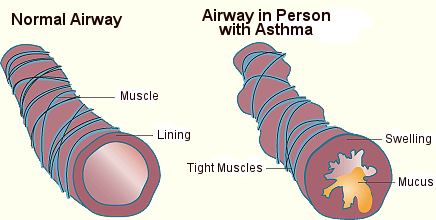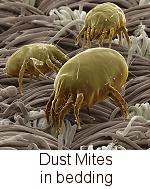Arthritis is a common condition that causes pain and inflammation (swelling) of the joints and bones. The main symptoms of arthritis include:
- pain
- stiffness
- restricted movements of the joints
- inflammation and swelling
- warmth and redness of the skin over the joint
One in every six people in Ireland is affected by arthritis
The most common forms of arthritis are:
- osteoarthritis
- rheumatoid arthritis
The characteristics of these two conditions are discussed below. Other types of arthritis are listed in the box, below left.
What is osteoarthritis?
The majority of people over 55 in Ireland have x ray evidence of osteoarthritis at some joint in their body.However,it can develop at any age as a result of an injury or another joint-related condition
In people affected by osteoarthritis, the cartilage (connective tissue) between their bones gradually wastes away (degenerates), leading to painful rubbing of bone on bone in the joints. The most frequently affected joints are in the:
Osteoarthritis often develops in people who are over 50 years of age. However, it can develop at any age as a result of an injury or another joint-related condition.
The cause of osteoarthritis is not fully understood. One theory is that some people are genetically predisposed to developing osteoarthritis, which means that they have an increased likelihood of inheriting it from their parents. However, this theory has not yet been proven.
See the A-Z topic about osteoarthritis for more information and advice about the condition.
What is rheumatoid arthritis?
Rheumatoid arthritis is a more severe, but less common, form of arthritis than osteoarthritis. It occurs when the body's immune system attacks and destroys the affected joints, causing pain and swelling to occur. This can lead to a reduction in movement and the breakdown of bone and cartilage. Women are three times more likely to be affected by the condition than men.
Rheumatoid arthritis is caused by a fault in the immune system (the body's natural defence against illness and infection) that makes the body attack its own tissues. The fault may be inherited genetically (passed on from a family member).
See the A-Z topic about rheumatoid arthritis for more information and advice about the condition.
Arthritis and children
Arthritis is often associated with older people, but sometimes it can also affect children. This is known as juvenile idiopathic arthritis (JIA). However, JIA is uncommon, affecting about one in 1,000 children.
The main types of JIA are discussed briefly below.
Oligo-articular JIA
Oligo-articular JIA is the most common type of JIA. It affects four or fewer joints in the body, most commonly in the knees, ankles and wrists.
Oligo-articular JIA has good recovery rates and long-term effects are rare.
However, there is a risk that children with the condition may develop eye problems, so it is advised that they should have regular eye checks with an eye care specialist (ophthalmologist).
Polyarticular JIA (or polyarthritis)
Polyarticular JIA (or polyarthritis) is type of JIA that affects five or more joints. It can develop at any age during childhood.
The symptoms of polyarticular JIA are similar to those of adult rheumatoid arthritis. The condition is often accompanied by a rash and a high temperature (fever) of 38C (100.4F) or above.
Systemic onset JIA
Systemic onset JIA begins with symptoms such as a fever, rash, lethargy (a lack of energy) and enlarged glands. Later on, joints may become swollen and inflamed. Like polyarticular JIA, systemic onset JIA can affect children of any age.
Enthesitis-related arthritis
Enthesitis-related arthritis is a type of juvenile arthritis that affects older boys or teenagers. The condition can cause pain in the soles of the feet and around the knee and hip joints, where the ligaments attach to the bone.
Outlook
There is no cure for arthritis, but there are a number of treatments that can help to slow down the condition's progress. Medication can help to relieve the symptoms of arthritis and, in severe cases, surgery may be recommended.
For osteoarthritis, analgesics (painkillers), non-steroidal anti-inflammatory drugs (NSAIDs), and corticosteroids are often prescribed. In very severe cases, surgical procedures may be recommended such as:
- arthroplasty (joint replacement therapy
- arthodesis (joint fusion)
- osteotomy (the addition or removal of bone)
See the A-Z topic about Osteoarthritis - treatment for more information about how the condition is treated.
In treating rheumatoid arthritis, the aim is to slow down the condition's progress and minimise joint damage. Treatments that may be recommended for rheumatoid arthritis include:
- analgesics (painkillers)
- disease modifying anti-rheumatic drugs (DMARDs)
- physiotherapy
- regular exercise
See the A-Z topic about Rheumatoid arthritis - treatment for more information about how the condition is treated.
Support groups
Arthritis Ireland


 If you are on medication, natural alternatives can assist, but should not be taken as a complete substitute. Believe it or not, research has shown that coffee, tea, caffeinated drinks, cocoa and chocolate all contain caffeine as well as other compounds that may help fend off asthma.
If you are on medication, natural alternatives can assist, but should not be taken as a complete substitute. Believe it or not, research has shown that coffee, tea, caffeinated drinks, cocoa and chocolate all contain caffeine as well as other compounds that may help fend off asthma. You should try to reduce levels of dust around your home and workplace. Dust can trigger an asthma attack very quickly.
You should try to reduce levels of dust around your home and workplace. Dust can trigger an asthma attack very quickly.